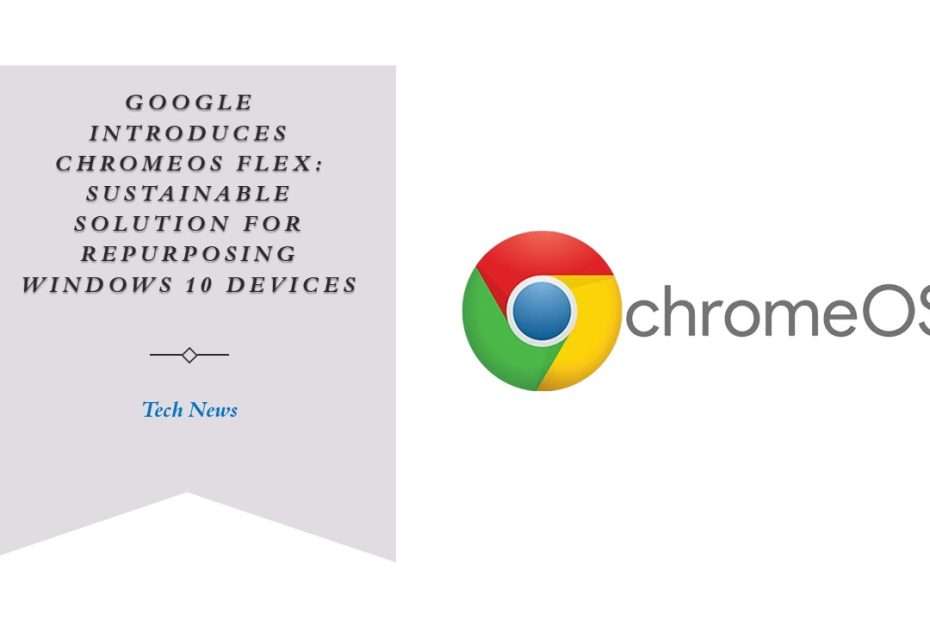On October 14, 2025, Microsoft is set to terminate official support for Windows 10, leaving a significant number of computers at risk of becoming electronic waste. This move has raised concerns about the environmental impact of such discarded devices. In response, Google has put forth a solution: ChromeOS Flex, which offers “auto-updating” hardware compatibility. This initiative aims to provide a sustainable alternative for repurposing existing machines, potentially mitigating the environmental burden posed by the disposal of millions of Windows 10 devices.
As Microsoft Windows 10 approaches end-of-life status, there are concerns regarding its environmental impact. Millions of PCs, still fully functional with Windows 10 but incompatible with Windows 11, may face disposal, contributing to electronic waste accumulation. However, Google presents an alternative solution. Encouraging owners not to rush into discarding their Windows 10 machines, Google proposes extending their lifespan by transforming them into cloud computers.
Google’s ChromeOS Flex offers a practical solution for both companies and consumers concerned about security vulnerabilities on their Windows 10 PCs. This cloud-based operating system, compatible with a wide range of hardware, including non-outdated Windows 10 machines, ensures ongoing security through automatic updates. By installing ChromeOS Flex, users can benefit from continuous security patches for years to come, mitigating the risks associated with outdated operating systems.
Designed specifically for conventional PC hardware, ChromeOS Flex serves as an excellent alternative to traditional operating systems like Windows and macOS. Its flexibility and compatibility make it an ideal choice for repurposing existing devices, providing users with a seamless transition to a secure and efficient computing environment.
Google outlines 11 compelling reasons why ChromeOS Flex stands as a superior alternative to Windows 10, emphasizing its modern, cloud-based architecture. With robust security features such as data encryption, automatic updates, and app sandboxing, ChromeOS Flex ensures user safety by guarding against malware and online threats effectively. Google asserts the system’s resilience against ransomware attacks, highlighting its track record of never being compromised by such threats, thereby instilling confidence in its security protocols.
ChromeOS Flex offers a user-friendly experience, particularly for individuals accustomed to using the Chrome browser or Google Workspace. This familiarity enhances usability and reduces the learning curve for new users. Moreover, the operating system prioritizes productivity with swift boot times, ensuring efficient performance without the common issue of startup bloat that often affects Windows systems. Additionally, ChromeOS Flex simplifies remote management through the Google Admin console, providing administrators with intuitive tools to oversee and control devices efficiently from a distance.
ChromeOS Flex boasts support for third-party business applications, particularly web-based services, enhancing its versatility for professional environments. Users can seamlessly access “legacy” Windows applications and productivity suites like Microsoft Office through internet streaming, facilitated by virtual app delivery. This integration ensures a smooth transition for businesses utilizing familiar software while leveraging the benefits of ChromeOS Flex’s cloud-based infrastructure.
Furthermore, ChromeOS Flex offers flexibility and compatibility, being certified to operate on nearly 600 OEM-branded devices. This extensive certification means that the cloud-based operating system is compatible with a wide range of hardware, making it suitable for deployment across various enterprise organizations. With its broad compatibility and support for third-party applications, ChromeOS Flex emerges as a flexible and practical choice for businesses seeking efficient and adaptable computing solutions.
The streamlined design and intuitive features of ChromeOS Flex contribute to a seamless user experience, particularly for those already integrated into Google’s ecosystem. Its quick boot times enhance productivity by minimizing delays, while the ease of remote management via the Google Admin console ensures efficient device administration. Overall, ChromeOS Flex caters to the needs of both individual users and administrators, offering a user-friendly and productive computing environment.
Despite its advantages, ChromeOS has yet to gain widespread adoption as an alternative operating system. Even after 12 years on the market, Google’s platform is installed on only 1.78 percent of desktop machines surveyed by Statcounter. While its popularity may lag behind other operating systems, ChromeOS Flex’s capabilities and benefits still make it a compelling choice for businesses looking to streamline operations, reduce costs, and minimize environmental impact.
Maybe you liked other interesting articles?

